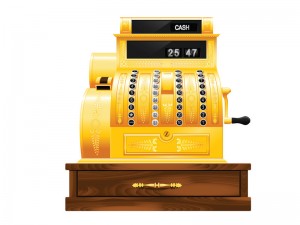 Black Friday is looming and I am sure all network folks that work in retail have been preparing as best they can. I would like to take this occasion to bring up the increasing importance of network monitoring of retail stores’s connectivity since the line between online and physical purchases is becoming blurrier and blurrier. Big-box retailers compete on many fronts such as price, customer attention, product availability, and selection. And Black Friday is the showdown for all of these. Everything else being equal, the winners will be the retailers that speak the language of the connected customer. This is the where connectivity is the facilitator of this effort.
Black Friday is looming and I am sure all network folks that work in retail have been preparing as best they can. I would like to take this occasion to bring up the increasing importance of network monitoring of retail stores’s connectivity since the line between online and physical purchases is becoming blurrier and blurrier. Big-box retailers compete on many fronts such as price, customer attention, product availability, and selection. And Black Friday is the showdown for all of these. Everything else being equal, the winners will be the retailers that speak the language of the connected customer. This is the where connectivity is the facilitator of this effort.
The key pieces of the connectivity puzzle that need to come together to push as much product out of the door as possible are the connected customer, the Point of Sale (POS) system, and electronic signage. Here is what their roles are and how they play together.
In-store Purchases: Customers with smartphones are much more empowered to make purchasing decisions for themselves. Big-box retailers, after going through a period of seeing customers using them as free showrooms, they have realized that they can’t fight the smartphone-armed clientele. Their only option is to embrace it. Not only that, but with the advent of in-store beacons, retailers have doubled down on the marketing and purchasing opportunities that can be extracted from a smartphone-carrying customer. This has reached the point where retailers offer free in-store Wi-Fi in order to have their customers as connected and engaged as possible. Of course, this comes with customers asking for price matching. But, hey… it’s better to win a customer by making a sale than not making one. But, it also comes with the customer being able to order from the retailer’s online store if a product is out of stock or if a particular model or size is not carried in-store.
Point of Sale: POS systems are moving to the cloud for several reasons: being able to run a business from anywhere, having real-time reporting and alerting, using thinner and cheaper POS systems that are more reliable and easier to maintain. However, to leverage all these advantages, the POS system needs connectivity to its cloud-based server. Otherwise the information about your inventory, real-time revenue, and so much other data cannot be used to drive real-time decisions that have to do with pricing adjustments, supply chain logistics, and marketing.
Electronic Signage: physical stores need to be able to advertise and market their products based on availability, competition, and customer demand. And the best way to do this today is by knowing what products you need to promote at each store, what you have available in stock, and whether your competition is selling the same product online and in neighboring stores. Obviously, this is something that cannot be done easily in real-time without electronic signage. Think about the scenario in which a store runs out of a specific product and they need to adjust their in-store signage manually. It would be cumbersome and labor intensive.
Optimizing your sales strategy by putting all these pieces of puzzle together is not an easy task and requires a substantial back-end infrastructure to collect real-time in-store data, process it, and make real-time decisions. Most retailers are not there yet, but they are definitely working on it. Online-only retails are a step ahead on this data-collection and data-crunching game, but their big-box counterparts are catching up. Actually, things have started working backwards with online retailers moving into physical locations, like Amazon opening its first physical store.
It’ll be interesting to see what the retail store of the next decade will look like.





